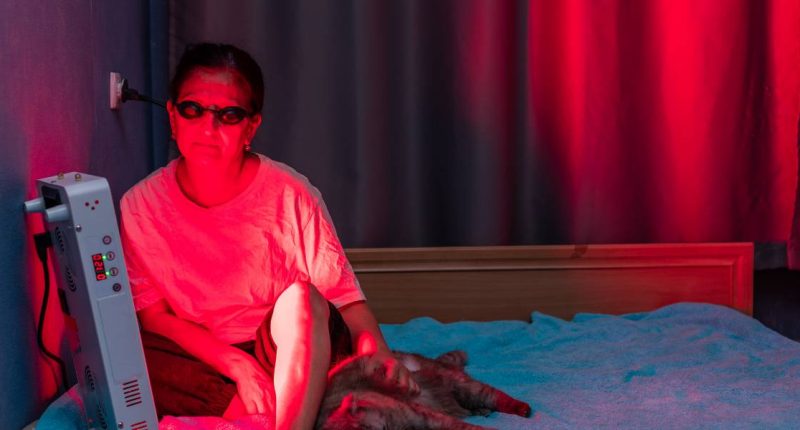Being exposed to red light can help people with diabetes reduce their blood sugar levels after they eat, a new study demonstrates.
Latest research has found that shining a red light on the back on an individual with diabetes for 15 minutes can lower their blood sugar levels by nearly 30%.
In addition, being exposed to red light for 15 minutes also reduces maximum glucose spiking by nearly 8%.
A blood sugar spike is a rapid increase in blood sugar, often brought on when eating too much food containing carbohydrates.
- Frozen shoulder triggered by high blood sugar
- Fruit bats’ bodies have adapted to control blood sugar levels without fail
- Activity snacks can help people with type 1 diabetes manage blood sugar levels
Frequently being exposed to blue light for long periods of time can negatively influence blood sugar, the study has reported.
According to the researchers, LED lights are “dominant in blue” and may be a potential “health span time bomb.”
Experts believe that lengthy exposure to blue light can trigger the development of diabetes and other health complications. However, they do note that this could be due to spending more time in sunlight.
Senior author Dr Michael Powner said: “It is clear that light affects the way mitochondria function, and this impacts our bodies at a cellular and physiological level.
“Our study has shown that we can use a single, 15-minute exposure to red light to reduce blood sugar levels after eating.”
He added: “While this has only been done in healthy individuals in this paper, it has the potential to impact diabetes control going forward, as it could help to reduce potentially damaging glucose spikes in the body after meals.”
Joint author Professor Glen Jeffery said: “Sunlight has a balance between red and blue, but we now live in a world where blue light is dominant because although we do not see it, LED lights are dominant in blue and have almost no red in them.
“This reduces mitochondrial function and ATP production. Hence our internal environments are red-starved.”
- Study highlights pivotal role of diet in reducing risks linked to diabetes and mental health
- Time in Range
- What is Red Light Therapy?
He continued: “Long-term exposure to blue light is potentially toxic without red. Blue light on its own impacts badly on physiology and can drive disrupted blood sugars that may in the long run contribute to diabetes and undermine health spans.
“Pre-1990, we all had incandescent lighting which was okay because it had the balance of blue and red similar to sunlight, but there is a potential health span time bomb in the change to LEDs in an ageing population. This can be partly corrected by spending more time in sunlight.”
The results show that an increased consumption of glucose was triggered by a frequency of 670 nanometers (nm) of red light stimulated energy production within mitochondria – the tiny powerhouses within cells.
During the investigation, the team of scientists examined 30 healthy participants, who were split into two groups – half in the 670 nm red light group, and half in the no light group.
Each participant was then told to drink glucose dissolved in water and then record their blood glucose levels every 15 minutes for two hours.
- Low Carb Diet: Beginner’s Guide
- Intermittent Fasting: Guide to Fasting and How it Works
- Mediterranean diet can help improve sleep quality
The researchers have found that the participants who were exposed to red light 45 minutes before having the drink experienced a reduction in peak blood glucose level and reduced total blood glucose during the two hours.
Keith Frayn, from the University of Oxford, said: “If confirmed later in people with diabetes, this could be the foundation of a useful intervention. But these intriguing findings should be regarded as quite preliminary.
“More investigations would be needed before we can fully assess this effect. Importantly, we need to know whether this is a true metabolic effect, or whether, for instance, the warming effect of the red light exposure alters patterns of blood flow, potentially altering the nature of the blood sampled by pricking a finger.”
He added: “We also need more information on what happens to the glucose that doesn’t appear in the blood.”
The study was published in the Journal of Biophotonics.







